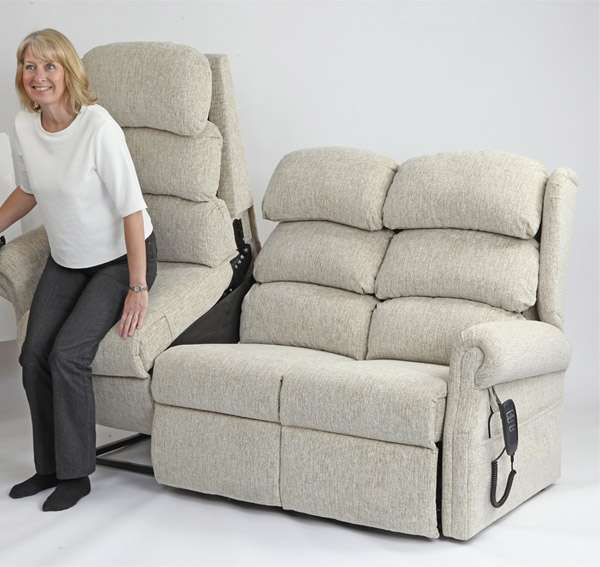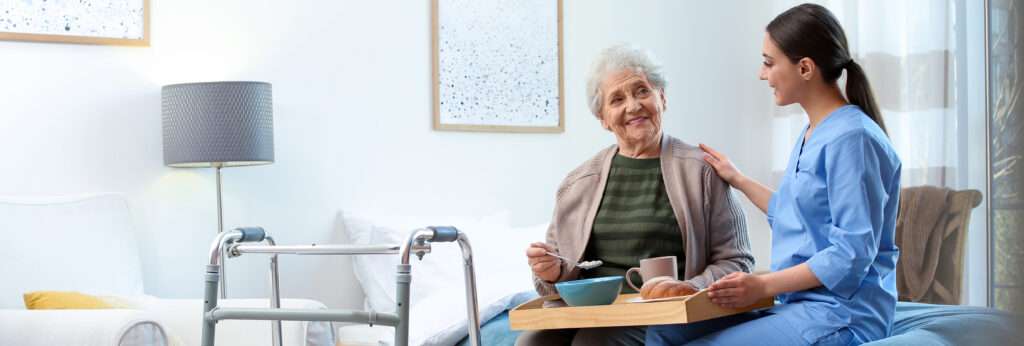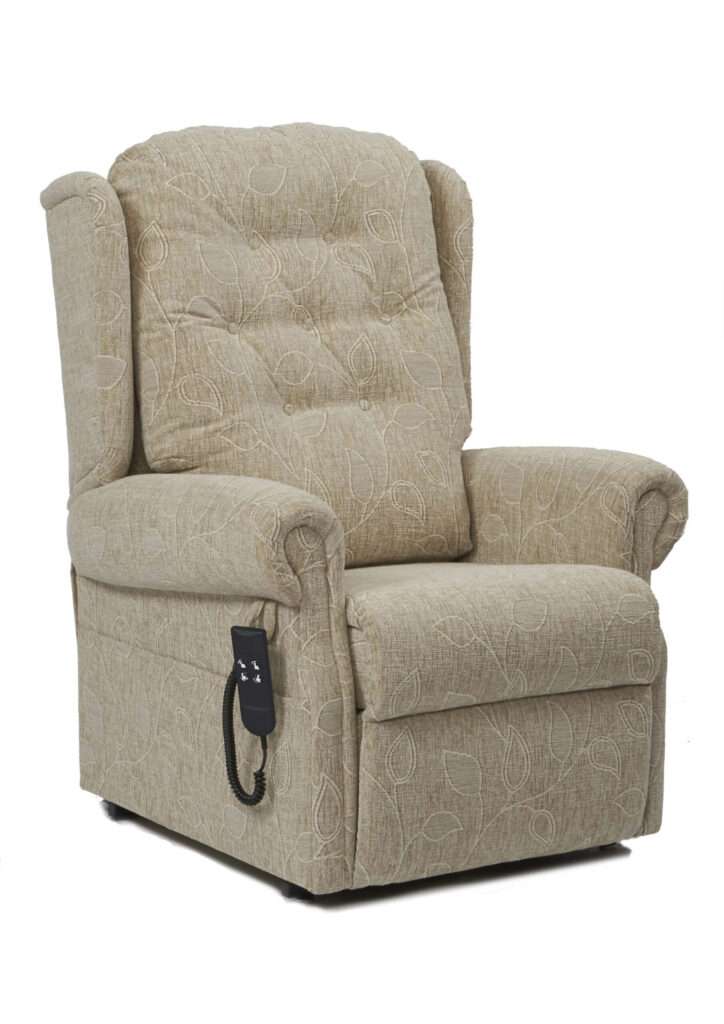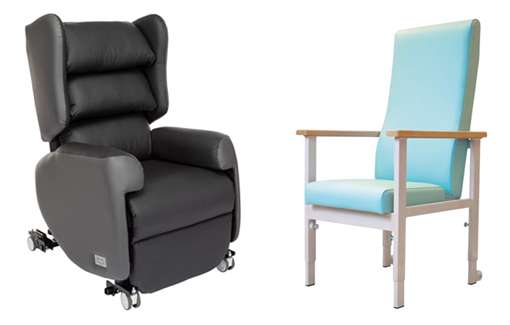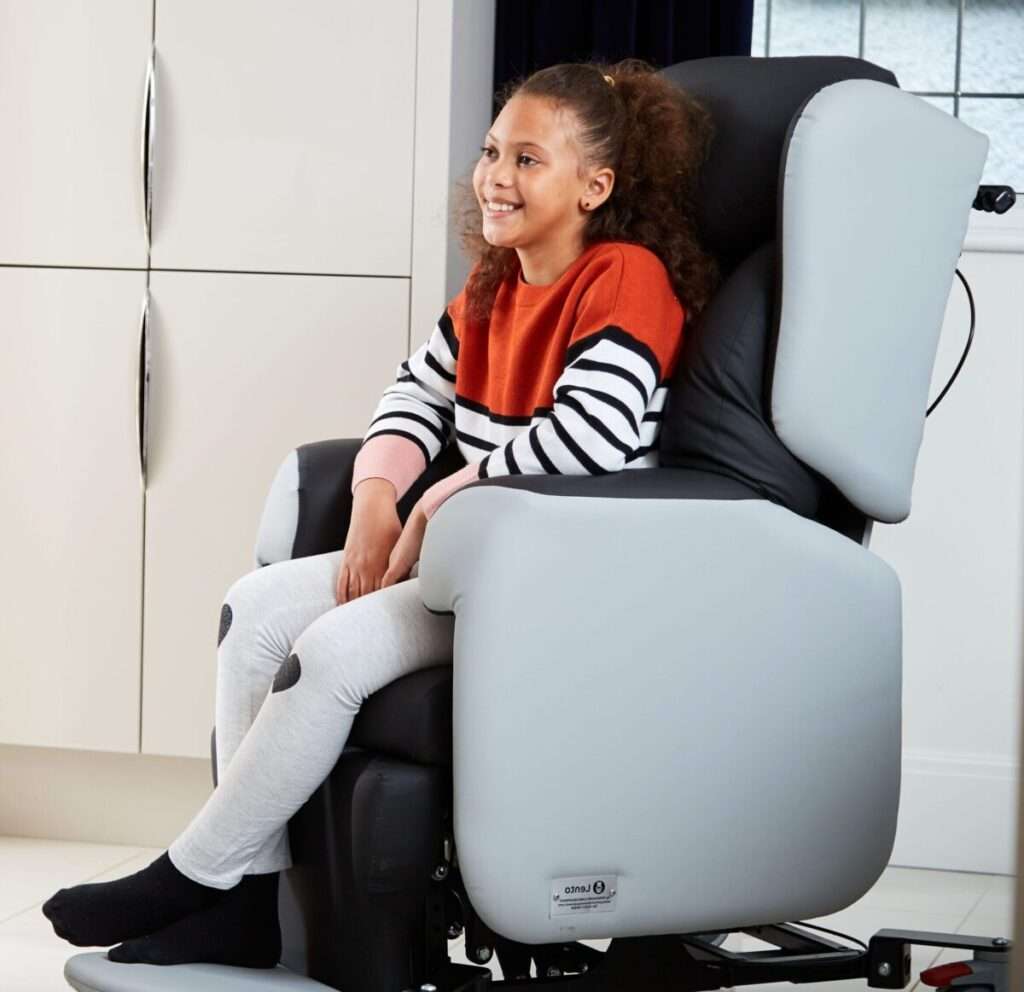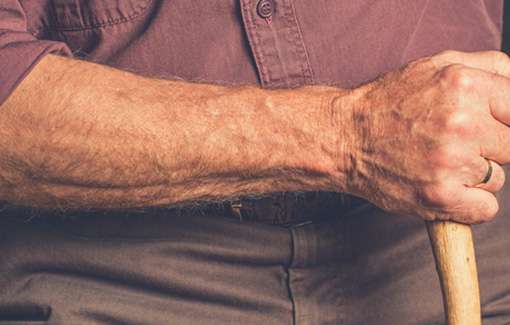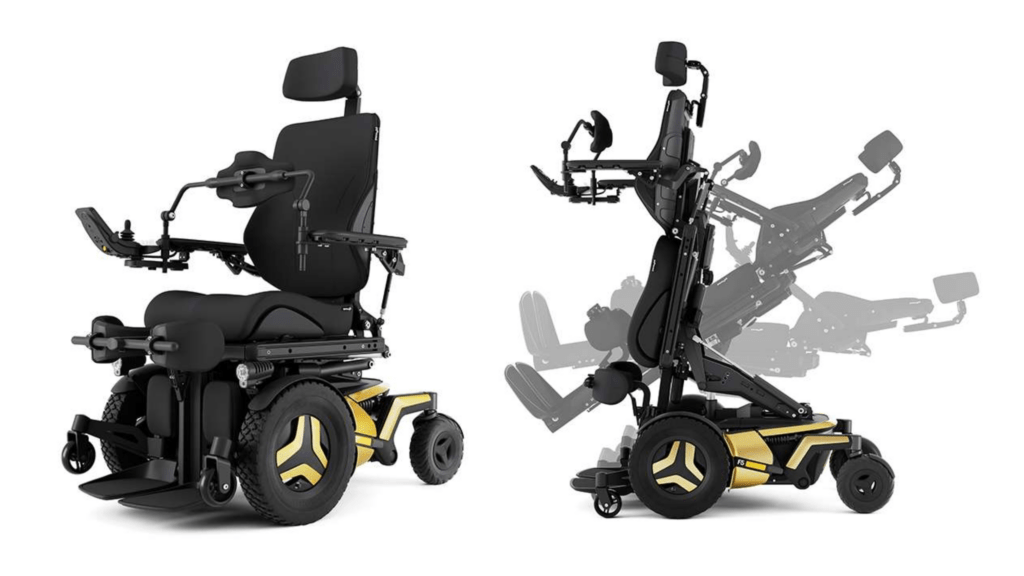When buying a riser recliner chair there are so many options to choose from. There’s a whole range of colours, fabrics, styles, pressure relieving cushions, backrests, and sizes available. However, when it comes to finding a chair that’s supportive and comfortable, sizing is definitely the most important factor.
Seat sizing has a huge impact on both posture and pressure care. So, if you get that right, you’re over halfway to finding the perfect riser recliner!
Sizing is especially important for older people (65+) as they spend, on average, 10+ hours a day sitting down. They also have thinner, weaker skin which is more susceptible to pressure ulcers.
For these reasons, seat size will always be number one on our checklist when specifying riser recliners.
Over the year, we have received many questions about how to get the seat sizing right — both directly from customers and occupational therapists we work alongside. So, here are the answers to the top 5 questions about riser recliner sizing…
Jump straight to…
1) How do you measure for a rise recliner?
Measuring for a rise and recline chair isn’t like measuring up a sofa to see if it will fit into your living room! You are focusing on the user and ensuring the chair can fit perfectly around them. This is an important thing for beginners to bear in mind before they start measuring.
To make measurements, all you need is a tape measure! Preferably a rigid tape measure with inches — most rise recliners are measured in inches rather than millimeters.
If you are using a fabric tape measure, ensure it doesn’t bend around the body. This gives a very different measurement which can lead to an ill-fitting chair.
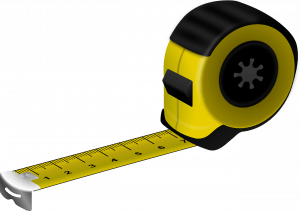
A rigid tape measure gives the most accurate measurements when sizing a riser recliner
2) What measurements do you need to size a riser recliner chair?
As with all specialist seating, there are 5 key measurements you need to size a riser recliner:
Seat height
To measure seat height accurately, record the distance between the floor to the top of the seat itself.
This is a crucial measurement. If the seat is too high, it encourages slouching. This is because the user often tries to get more comfortable by getting their feet on the floor.
However, the seat being too low poses a problem too. It can disrupt the circulation in the lower legs, causing swelling. Plus, it creates too much pressure on the buttocks which is uncomfortable and increases the risk of pressure ulcers.
Bonus tip: If the user cannot stand up straight for measuring their height, ask them to stretch their arms and hands out so they are in a ‘scarecrow’ position. The measurement from fingertip to their other fingertip will be about their height!
Seat depth
To get the best measurement of seat depth, you should measure from the front of the seat cushion to the backrest of the chair.
When the user is sat back against the lumbar support of the chair, the cushions should be deep enough to provide support to the entire length of the upper leg. This keeps the back supported and distributes their weight to avoid pressure build up.
Be careful not to make the seat too deep though. This can put too much pressure on the back of the knees and cause the user to slide in their seat.
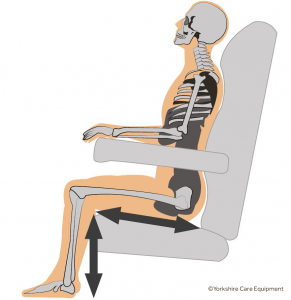
The top arrow shows seat depth and the bottom arrow shows seat height
Seat width
Seat width should be measured from the inside of one armrest to the inside of the other.
There should be about a ¾ inch (or 20mm) gap on either side of the client’s buttocks to make sure that the arms sit comfortably on the armrests.
A chair that’s too wide can encourage leaning. Whereas a chair that’s too narrow can rub against the body, causing discomfort or pressure ulcers.
Armrest height
Armrest height is measured from the middle of the seat depth (between the front of the arm and where the arm meets the backrest). You then measure up from the top of the seat cushion to the top of the armrest.
The arms should sit gently and comfortably with the shoulder in a neutral position.
Armrests that are too high can lead to neck and shoulder pain. Whereas armrests that are too low make it harder to get in and out of the chair.
Back height
Measure along the height of the backrest, from the (back) edge of the seat cushion up to the top of the backrest itself.
The backrest needs to be tall enough to support the back of the user’s head when they are sat right back in the chair. If it’s not right they may experience neck pain or head drooping.
For more practical advice on measuring for a riser recliner, please see our Guide to Measuring for Specialist Seating.
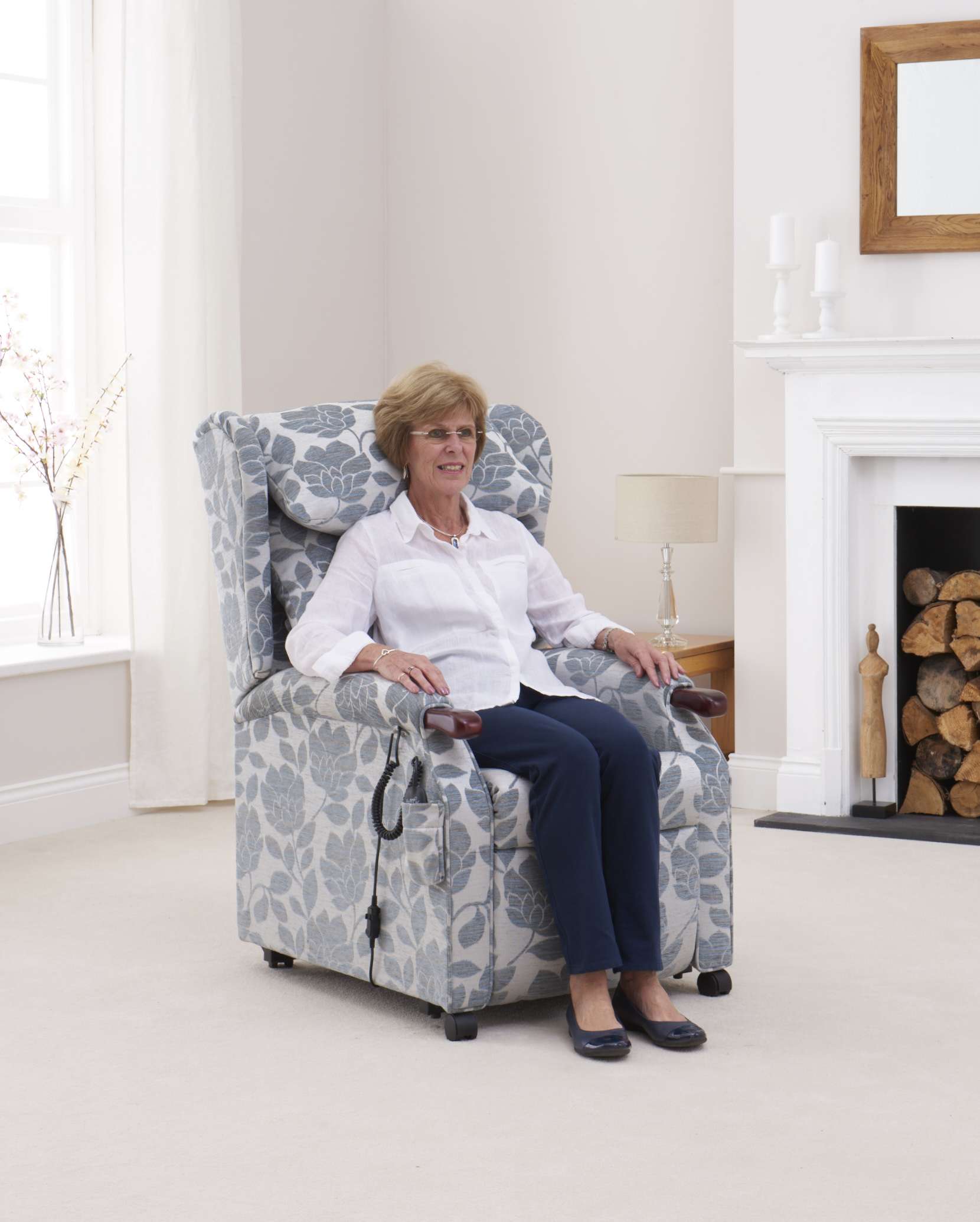
3) Do I need to take the measurements in a rise recliner chair?
If possible, it is best to carry out the assessment in a riser recliner chair. That will give you the most accurate measurements.
However, it isn’t essential. If needed, using a dining chair to take measurements can work well.
During home assessments we bring some rise recliners with us. This lets us test some different options to see what’s best for the user. But it also ensures the most accurate measurements.
Alternatively, we can also talk you through the measurements over video call without you having a riser recliner present.
4) Should your feet touch the floor?
Absolutely yes! If the feet aren’t supported, 94% of the person’s body weight would be going through the buttocks and thighs. This can quickly lead to pressure sores and other discomforts.
It might seem obvious, but if the user can’t touch the floor it means that the seat is too high.
This is often a problem with petite older people — those who are under 5 foot. Standard rise recliner sizes come up too high leaving their feet dangling.
To avoid slouching, poor blood circulation, and of course pressure sores, we recommend a made-to-measure riser recliner in these cases.
You can get custom sizing to get the knee to hip angle as close to 90° as possible and keep the user’s feet flat on the floor.
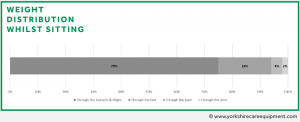
This graph shows weight distribution whilst sitting
5) If the chair will be used for sleeping, does it need sizing differently?
If the chair is going to be slept in, seat sizing doesn’t really need to change. If the sizing is done accurately, the user can recline comfortably to any position.
Occasionally people like their chair to be very slightly wider than fitted so there is room for a duvet cover. However, this is generally only if they sleep in the chair frequently.
Summary
We hope we answered your questions and you now feel more confident in how to size a riser recliner correctly! Sizing is so important. That’s the biggest benefit of made-to-measure riser recliners, you can get the measurements exactly right to suit every need for the user.
If you haven’t measured for riser recliners before, we recommend booking a joint assessment with a seating specialist. They can walk you through taking accurate measurements.
We offer free sizing consultations at home, in our showroom or via video call. Book now using this form:
Error: Contact form not found.





